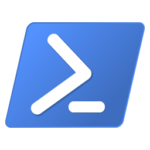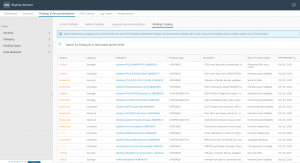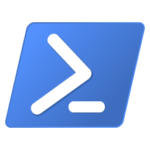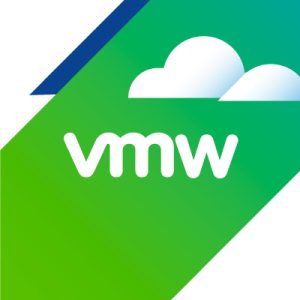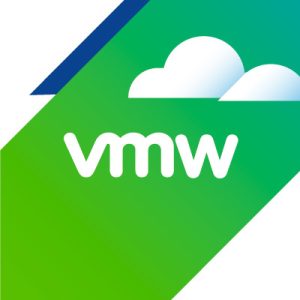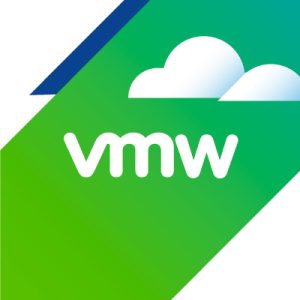It has been a while that I did not find an interesting malicious Python script. All the scripts that I recently spotted were always the same: a classic intostealer using Discord as C2 channel. Today I found one that contains a lot of anti-sanboxing techniques. Let's review them. For malware, it's key to detect the environment where they are executed. When detonated inside a sandbox (automatically or, manually, by an Analyst), they will be able to change their behaviour (most likely, do nothing)
Monthly Archives: October 2023
PowerShell 7.4 Release Candidate 1
PowerShell 7.4 RC-1 is now available
We’re proud to announce the availability of PowerShell 7.4.0-rc.1!
This is the first release candidate version of PowerShell 7.4 and is considered a “go-live” release
meaning that it is a supported release in production.
Now is the time to test out PowerShell 7.4 in your environment.
PowerShell 7.4 is built on top of .NET 8 and as a LTS (Long Term Support) release will be supported for 3 years.
How do I get it?
Since PowerShell 7 is supported on Windows, Linux, and macOS, there are a variety of ways to get it.
If you had installed the previous PowerShell 7.4 preview release (7.4.0-preview.6) via the Windows Store or MSI (and opted into Microsoft Update),
you will be automatically updated to 7.4.0-rc.1.
Note that after releases there are some delays in all release channels getting the latest bits.
If this version is not available on your release channel of choice expect it to be available
within 2 weeks.
What’s new in this release?
- PSResourceGet is now GA and has reached a 1.0.0 version in this release– for more info on this module release check out this blog post
- PSReadLine has been incremented to a new feature version 2.3.4– for more info on this module release check out this blog post
- This release also contained a number of bug fixes– for the full list of changes please refer to the changelog
For more info on what’s changed in PowerShell 7.4, check out this page of the documentation.
Experimental Features which were made stable for 7.4
The following features were developed and released as experimental during the PowerShell 7.4
previews. Through telemetry and user feedback we determined that they should
be available as non-experimental features in the 7.4 release.
- PSConstrainedAuditLogging
- PSCustomTableHeaderLabelDecoration
- PSWindowsNativeCommandArgPassing
- PSNativeCommandErrorActionPreference
- PSNativeCommandPreserveBytePipe
What’s next?
PowerShell 7.4 will be our next LTS release and expected to ship once an RC is determined to be ready.
We’ll have a separate blog post when the GA release of 7.4 becomes available.
We appreciate all the efforts of the community, both individuals and working group members,
and look forward to your continued feedback and contributions!
Sydney
PowerShell Team
The post PowerShell 7.4 Release Candidate 1 appeared first on PowerShell Team.
Flying under the Radar: The Privacy Impact of multicast DNS, (Mon, Oct 30th)
The recent patch to iOS/macOS for CVE-2023-42846 made me think it is probably time to write up a reminder about the privacy impact of UPNP and multicast DNS. This is not a new issue, but it appears to have been forgotten a bit [vuln]. In particular, Apple devices are well-known for their verbose multicast DNS messages.
VMware Skyline Advisor Pro Proactive Findings – October 2023 Edition
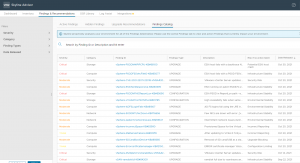
Tweet VMware Skyline Advisor Pro releases new proactive Findings every month. Findings are prioritized by trending issues in VMware Technical Support, issues raised through post escalation review, security vulnerabilities, issues raised from VMware engineering, and nominated by customers. For the month of October, we released 39 new Findings. Of these, there are 30 Findings based … Continued
PowerShell Extension for Visual Studio Code Fall 2023 Update
PowerShell Extension for Visual Studio Code Fall 2023 Update
We are excited to announce that the fall update to the PowerShell Extension for Visual Studio Code
is now available on the extension marketplace.
In this update, thanks to efforts across the team, we are shipping the extension with the latest and greatest PSReadLine, v2.3.4! In addition this release contains a number of bug fixes and community contributions.
Thanks to all the many community contributors whose efforts make releases such as these possible!
Updates in the Fall Release
Note that these updates all shipped in our preview channel
for VS Code before shipping in our stable channel.
Some highlights of the fall release:
- Stop hiding Activity Bar in ISE Mode.
- Fix race condition with displaying PowerShell name on icon.
- Support
~,./and named workspace folders incwd. - Enhance
additionalPowerShellExessetting. - Add
startLocationsetting for Extension Terminal. (Thanks @krishankanumuri!) - Upgrade bundled PSReadLine module to v2.3.4.
- Add
NonetoPsesLogLevelenum. - Fix debugging script blocks that aren’t in files.
- Fix shell integration for PowerShell 5.1 with strict mode.
For the full list of changes please refer to our changelog.
In this release we also updated our versioning schema. The middle version number no longer corresponds to the month, but is simply incremented. Even versions are stable, and odd versions are pre-release, with the latter purposefully being versioned higher than the former in order to keep both channels (pre-release and stable) available in the Visual Studio Code marketplace.
Getting Support and Giving Feedback
While we hope the new release provides a better user experience, there are bound to be issues.
Please let us know if you run into anything.
If you encounter any issues with the PowerShell Extension in Visual Studio Code or have feature requests, the best place to get support is through our GitHub repository.
Sydney Smith
PowerShell Team
The post PowerShell Extension for Visual Studio Code Fall 2023 Update appeared first on PowerShell Team.
Threat Actors Exploit Atlassian Confluence CVE-2023-22515 for Initial Access to Networks
SUMMARY
The Cybersecurity and Infrastructure Security Agency (CISA), Federal Bureau of Investigation (FBI), and Multi-State Information Sharing and Analysis Center (MS-ISAC) are releasing this joint Cybersecurity Advisory (CSA) in response to the active exploitation of CVE-2023-22515. This recently disclosed vulnerability affects certain versions of Atlassian Confluence Data Center and Server, enabling malicious cyber threat actors to obtain initial access to Confluence instances by creating unauthorized Confluence administrator accounts. Threat actors exploited CVE-2023-22515 as a zero-day to obtain access to victim systems and continue active exploitation post-patch. Atlassian has rated this vulnerability as critical; CISA, FBI, and MS-ISAC expect widespread, continued exploitation due to ease of exploitation.
CISA, FBI, and MS-ISAC strongly encourage network administrators to immediately apply the upgrades provided by Atlassian. CISA, FBI, and MS-ISAC also encourage organizations to hunt for malicious activity on their networks using the detection signatures and indicators of compromise (IOCs) in this CSA. If a potential compromise is detected, organizations should apply the incident response recommendations.
For additional information on upgrade instructions, a complete list of affected product versions, and IOCs, see Atlassian’s security advisory for CVE-2023-22515.[1] While Atlassian’s advisory provides interim measures to temporarily mitigate known attack vectors, CISA, FBI, and MS-ISAC strongly encourage upgrading to a fixed version or taking servers offline to apply necessary updates.
Download the PDF version of this report:
TECHNICAL DETAILS
Overview
CVE-2023-22515 is a critical Broken Access Control vulnerability affecting the following versions of Atlassian Confluence Data Center and Server. Note: Atlassian Cloud sites (sites accessed by an atlassian.net domain), including Confluence Data Center and Server versions before 8.0.0, are not affected by this vulnerability.
|
|
|
Unauthenticated remote threat actors can exploit this vulnerability to create unauthorized Confluence administrator accounts and access Confluence instances. More specifically, threat actors can change the Confluence server’s configuration to indicate the setup is not complete and use the /setup/setupadministrator.action endpoint to create a new administrator user. The vulnerability is triggered via a request on the unauthenticated /server-info.action endpoint.
Considering the root cause of the vulnerability allows threat actors to modify critical configuration settings, CISA, FBI, and MS-ISAC assess that the threat actors may not be limited to creating new administrator accounts. Open source further indicates an Open Web Application Security Project (OWASP) classification of injection (i.e., CWE-20: Improper Input Validation) is an appropriate description.[2] Atlassian released a patch on October 4, 2023, and confirmed that threat actors exploited CVE-2023-22515 as a zero-day—a previously unidentified vulnerability.[1]
On October 5, 2023, CISA added this vulnerability to its Known Exploited Vulnerabilities Catalog based on evidence of active exploitation. Due to the ease of exploitation, CISA, FBI, and MS-ISAC expect to see widespread exploitation of unpatched Confluence instances in government and private networks.
Post-Exploitation: Exfiltration of Data
Post-exploitation exfiltration of data can be executed through of a variety of techniques. A predominant method observed involves the use of cURL—a command line tool used to transfer data to or from a server. An additional data exfiltration technique observed includes use of Rclone [S1040]—a command line tool used to sync data to cloud and file hosting services such as Amazon Web Services and China-based UCloud Information Technology Limited. Note: This does not preclude the effectiveness of alternate methods, but highlights methods observed to date. Threat actors were observed using Rclone to either upload a configuration file to victim infrastructure or enter cloud storage credentials via the command line. Example configuration file templates are listed in the following Figures 1 and 2, which are populated with the credentials of the exfiltration point:
[s3] |
[minio] |
The following User-Agent strings were observed in request headers. Note: As additional threat actors begin to use this CVE due to the availability of publicly posted proof-of-concept code, an increasing variation in User-Agent strings is expected:
Python-requests/2.27.1curl/7.88.1
Indicators of Compromise
Disclaimer: Organizations are recommended to investigate or vet these IP addresses prior to taking action, such as blocking.
The following IP addresses were obtained from FBI investigations as of October 2023 and observed conducting data exfiltration:
170.106.106[.]1643.130.1[.]222152.32.207[.]23199.19.110[.]1495.217.6[.]16(Note: This is the official rclone.org website)
Additional IP addresses observed sending related exploit traffic have been shared by Microsoft.[3]
DETECTION METHODS
Network defenders are encouraged to review and deploy Proofpoint’s Emerging Threat signatures. See Ruleset Update Summary – 2023/10/12 – v10438.[4]
Network defenders are also encouraged to aggregate application and server-level logging from Confluence servers to a logically separated log search and alerting system, as well as configure alerts for signs of exploitation (as detailed in Atlassian’s security advisory).
INCIDENT RESPONSE
Organizations are encouraged to review all affected Confluence instances for evidence of compromise, as outlined by Atlassian.[1] If compromise is suspected or detected, organizations should assume that threat actors hold full administrative access and can perform any number of unfettered actions—these include but are not limited to exfiltration of content and system credentials, as well as installation of malicious plugins.
If a potential compromise is detected, organizations should:
- Collect and review artifacts such as running processes/services, unusual authentications, and recent network connections.
- Note: Upgrading to fixed versions, as well as removing malicious administrator accounts may not fully mitigate risk considering threat actors may have established additional persistence mechanisms.
- Search and audit logs from Confluence servers for attempted exploitation.[2]
- Quarantine and take offline potentially affected hosts.
- Provision new account credentials.
- Reimage compromised hosts.
- Report the compromise to CISA via CISA’s 24/7 Operations Center (report@cisa.gov or 888-282-0870). The FBI encourages recipients of this document to report information concerning suspicious or criminal activity to their local FBI field office or IC3.gov. State, local, tribal, and territorial governments should report incidents to the MS-ISAC (SOC@cisecurity.org or 866-787-4722).
MITIGATIONS
These mitigations apply to all organizations using non-cloud Atlassian Confluence Data Center and Server software. CISA, FBI, and MS-ISAC recommend that software manufacturers incorporate secure by design and default principles and tactics into their software development practices to reduce the prevalence of Broken Access Control vulnerabilities, thus strengthening the secure posture for their customers.
For more information on secure by design, see CISA’s Secure by Design and Default webpage and joint guide.
As of October 10, 2023, proof-of-concept exploits for CVE-2023-22515 have been observed in open source publications.[5] While there are immediate concerns such as increased risk of exploitation and the potential integration into malware toolkits, the availability of a proof-of-concept presents an array of security and operational challenges that extend beyond these immediate issues. Immediate action is strongly advised to address the potential risks associated with this development.
CISA, FBI, and MS-ISAC recommend taking immediate action to address the potential associated risks and encourage organizations to:
- Immediately upgrade to fixed versions. See Atlassian’s upgrading instructions[6] for more information. If unable to immediately apply upgrades, restrict untrusted network access until feasible. Malicious cyber threat actors who exploit the affected instance can escalate to administrative privileges.
- Follow best cybersecurity practices in your production and enterprise environments. While not observed in this instance of exploitation, mandating phishing-resistant multifactor authentication (MFA) for all staff and services can make it more difficult for threat actors to gain access to networks and information systems. For additional best practices, see:
- CISA’s Cross-Sector Cybersecurity Performance Goals (CPGs). The CPGs, developed by CISA and the National Institute of Standards and Technology (NIST), are a prioritized subset of IT and OT security practices that can meaningfully reduce the likelihood and impact of known cyber risks and common tactics, techniques, and procedures (TTPs). Because the CPGs are a subset of best practices, CISA recommends software manufacturers implement a comprehensive information security program based on a recognized framework, such as the NIST Cybersecurity Framework (CSF).
- Center for Internet Security’s (CIS) Critical Security Controls. The CIS Critical Security Controls are a prescriptive, prioritized, and simplified set of best practices that organizations can use to strengthen cybersecurity posture and protect against cyber incidents.
RESOURCES
- NIST: CVE-2023-22515
- MITRE: CWE-20 – Improper Input Validation
- CISA: Known Exploited Vulnerabilities Catalog
- MITRE Software: Rclone
- CISA: Secure by Design and Default
- CISA: Phishing-Resistant MFA
- CISA: Cross-Sector Cybersecurity Performance Goals
- CIS: Critical Security Controls
REFERENCES
[1] Atlassian: CVE-2023-22515 – Broken Access Control Vulnerability in Confluence Data Center and Server
[2] Rapid7: CVE-2023-22515 Analysis
[3] Microsoft: CVE-2023-22515 Exploit IP Addresses
[4] Proofpoint: Emerging Threats Rulesets
[5] Confluence CVE-2023-22515 Proof of Concept – vulhub
[6] Atlassian Support: Upgrading Confluence
DISCLAIMER
The information in this report is being provided “as is” for informational purposes only. CISA, FBI, and MS-ISAC do not endorse any commercial entity, product, company, or service, including any entities, products, or services linked within this document. Any reference to specific commercial entities, products, processes, or services by service mark, trademark, manufacturer, or otherwise, does not constitute or imply endorsement, recommendation, or favoring by CISA, FBI, and MS-ISAC.
VERSION HISTORY
October 16, 2023: Initial version.
Top 10 Most Popular Knowledge Articles for Horizon, WorkspaceONE, End User Computing (EUC), Personal Desktop for September, 2023
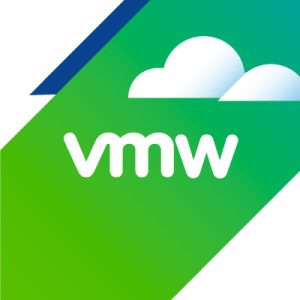
Tweet Get answers and solutions instantly by using VMware’s Knowledge Base (KB) articles to solve known issues. Whether you’re looking to improve your productivity, troubleshoot common issues, or simply learn something new, these most used and most viewed knowledge articles are a great place to start. Here are the top 5 most viewed KB articles … Continued
Top 10 Most Popular Knowledge Articles for Horizon, WorkspaceONE, End User Computing (EUC), Personal Desktop for September, 2023
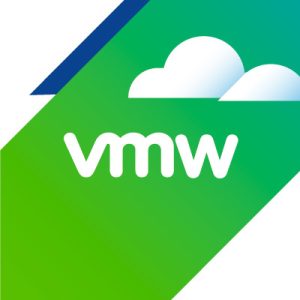
Tweet Get answers and solutions instantly by using VMware’s Knowledge Base (KB) articles to solve known issues. Whether you’re looking to improve your productivity, troubleshoot common issues, or simply learn something new, these most used and most viewed knowledge articles are a great place to start. Here are the top 5 most viewed KB articles … Continued
The post Top 10 Most Popular Knowledge Articles for Horizon, WorkspaceONE, End User Computing (EUC), Personal Desktop for September, 2023 appeared first on VMware Support Insider.
NSA and CISA Red and Blue Teams Share Top Ten Cybersecurity Misconfigurations
A plea for network defenders and software manufacturers to fix common problems.
EXECUTIVE SUMMARY
The National Security Agency (NSA) and Cybersecurity and Infrastructure Security Agency (CISA) are releasing this joint cybersecurity advisory (CSA) to highlight the most common cybersecurity misconfigurations in large organizations, and detail the tactics, techniques, and procedures (TTPs) actors use to exploit these misconfigurations.
Through NSA and CISA Red and Blue team assessments, as well as through the activities of NSA and CISA Hunt and Incident Response teams, the agencies identified the following 10 most common network misconfigurations:
- Default configurations of software and applications
- Improper separation of user/administrator privilege
- Insufficient internal network monitoring
- Lack of network segmentation
- Poor patch management
- Bypass of system access controls
- Weak or misconfigured multifactor authentication (MFA) methods
- Insufficient access control lists (ACLs) on network shares and services
- Poor credential hygiene
- Unrestricted code execution
These misconfigurations illustrate (1) a trend of systemic weaknesses in many large organizations, including those with mature cyber postures, and (2) the importance of software manufacturers embracing secure-by-design principles to reduce the burden on network defenders:
- Properly trained, staffed, and funded network security teams can implement the known mitigations for these weaknesses.
- Software manufacturers must reduce the prevalence of these misconfigurations—thus strengthening the security posture for customers—by incorporating secure-by-design and -default principles and tactics into their software development practices.[1]
NSA and CISA encourage network defenders to implement the recommendations found within the Mitigations section of this advisory—including the following—to reduce the risk of malicious actors exploiting the identified misconfigurations.
- Remove default credentials and harden configurations.
- Disable unused services and implement access controls.
- Update regularly and automate patching, prioritizing patching of known exploited vulnerabilities.[2]
- Reduce, restrict, audit, and monitor administrative accounts and privileges.
NSA and CISA urge software manufacturers to take ownership of improving security outcomes of their customers by embracing secure-by-design and-default tactics, including:
- Embedding security controls into product architecture from the start of development and throughout the entire software development lifecycle (SDLC).
- Eliminating default passwords.
- Providing high-quality audit logs to customers at no extra charge.
- Mandating MFA, ideally phishing-resistant, for privileged users and making MFA a default rather than opt-in feature.[3]
Download the PDF version of this report: PDF, 660 KB
TECHNICAL DETAILS
Note: This advisory uses the MITRE ATT&CK® for Enterprise framework, version 13, and the MITRE D3FEND™ cybersecurity countermeasures framework.[4],[5] See the Appendix: MITRE ATT&CK tactics and techniques section for tables summarizing the threat actors’ activity mapped to MITRE ATT&CK tactics and techniques, and the Mitigations section for MITRE D3FEND countermeasures.
For assistance with mapping malicious cyber activity to the MITRE ATT&CK framework, see CISA and MITRE ATT&CK’s Best Practices for MITRE ATT&CK Mapping and CISA’s Decider Tool.[6],[7]
Overview
Over the years, the following NSA and CISA teams have assessed the security posture of many network enclaves across the Department of Defense (DoD); Federal Civilian Executive Branch (FCEB); state, local, tribal, and territorial (SLTT) governments; and the private sector:
- Depending on the needs of the assessment, NSA Defensive Network Operations (DNO) teams feature capabilities from Red Team (adversary emulation), Blue Team (strategic vulnerability assessment), Hunt (targeted hunt), and/or Tailored Mitigations (defensive countermeasure development).
- CISA Vulnerability Management (VM) teams have assessed the security posture of over 1,000 network enclaves. CISA VM teams include Risk and Vulnerability Assessment (RVA) and CISA Red Team Assessments (RTA).[8] The RVA team conducts remote and onsite assessment services, including penetration testing and configuration review. RTA emulates cyber threat actors in coordination with an organization to assess the organization’s cyber detection and response capabilities.
- CISA Hunt and Incident Response teams conduct proactive and reactive engagements, respectively, on organization networks to identify and detect cyber threats to U.S. infrastructure.
During these assessments, NSA and CISA identified the 10 most common network misconfigurations, which are detailed below. These misconfigurations (non-prioritized) are systemic weaknesses across many networks.
Many of the assessments were of Microsoft® Windows® and Active Directory® environments. This advisory provides details about, and mitigations for, specific issues found during these assessments, and so mostly focuses on these products. However, it should be noted that many other environments contain similar misconfigurations. Network owners and operators should examine their networks for similar misconfigurations even when running other software not specifically mentioned below.
1. Default Configurations of Software and Applications
Default configurations of systems, services, and applications can permit unauthorized access or other malicious activity. Common default configurations include:
- Default credentials
- Default service permissions and configurations settings
Default Credentials
Many software manufacturers release commercial off-the-shelf (COTS) network devices —which provide user access via applications or web portals—containing predefined default credentials for their built-in administrative accounts.[9] Malicious actors and assessment teams regularly abuse default credentials by:
- Finding credentials with a simple web search [T1589.001] and using them [T1078.001] to gain authenticated access to a device.
- Resetting built-in administrative accounts [T1098] via predictable forgotten passwords questions.
- Leveraging default virtual private network (VPN) credentials for internal network access [T1133].
- Leveraging publicly available setup information to identify built-in administrative credentials for web applications and gaining access to the application and its underlying database.
- Leveraging default credentials on software deployment tools [T1072] for code execution and lateral movement.
In addition to devices that provide network access, printers, scanners, security cameras, conference room audiovisual (AV) equipment, voice over internet protocol (VoIP) phones, and internet of things (IoT) devices commonly contain default credentials that can be used for easy unauthorized access to these devices as well. Further compounding this problem, printers and scanners may have privileged domain accounts loaded so that users can easily scan documents and upload them to a shared drive or email them. Malicious actors who gain access to a printer or scanner using default credentials can use the loaded privileged domain accounts to move laterally from the device and compromise the domain [T1078.002].
Default Service Permissions and Configuration Settings
Certain services may have overly permissive access controls or vulnerable configurations by default. Additionally, even if the providers do not enable these services by default, malicious actors can easily abuse these services if users or administrators enable them.
Assessment teams regularly find the following:
- Insecure Active Directory Certificate Services
- Insecure legacy protocols/services
- Insecure Server Message Block (SMB) service
Insecure Active Directory Certificate Services
Active Directory Certificate Services (ADCS) is a feature used to manage Public Key Infrastructure (PKI) certificates, keys, and encryption inside of Active Directory (AD) environments. ADCS templates are used to build certificates for different types of servers and other entities on an organization’s network.
Malicious actors can exploit ADCS and/or ADCS template misconfigurations to manipulate the certificate infrastructure into issuing fraudulent certificates and/or escalate user privileges to domain administrator privileges. These certificates and domain escalation paths may grant actors unauthorized, persistent access to systems and critical data, the ability to impersonate legitimate entities, and the ability to bypass security measures.
Assessment teams have observed organizations with the following misconfigurations:
- ADCS servers running with web-enrollment enabled. If web-enrollment is enabled, unauthenticated actors can coerce a server to authenticate to an actor-controlled computer, which can relay the authentication to the ADCS web-enrollment service and obtain a certificate [T1649] for the server’s account. These fraudulent, trusted certificates enable actors to use adversary-in-the-middle techniques [T1557] to masquerade as trusted entities on the network. The actors can also use the certificate for AD authentication to obtain a Kerberos Ticket Granting Ticket (TGT) [T1558.001], which they can use to compromise the server and usually the entire domain.
- ADCS templates where low-privileged users have enrollment rights, and the enrollee supplies a subject alternative name. Misconfiguring various elements of ADCS templates can result in domain escalation by unauthorized users (e.g., granting low-privileged users certificate enrollment rights, allowing requesters to specify a
subjectAltNamein the certificate signing request [CSR], not requiring authorized signatures for CSRs, grantingFullControlorWriteDaclpermissions to users). Malicious actors can use a low-privileged user account to request a certificate with a particular Subject Alternative Name (SAN) and gain a certificate where the SAN matches the User Principal Name (UPN) of a privileged account.
Note: For more information on known escalation paths, including PetitPotam NTLM relay techniques, see: Domain Escalation: PetitPotam NTLM Relay to ADCS Endpoints and Certified Pre-Owned, Active Directory Certificate Services.[10],[11],[12]
Insecure legacy protocols/services
Many vulnerable network services are enabled by default, and assessment teams have observed them enabled in production environments. Specifically, assessment teams have observed Link-Local Multicast Name Resolution (LLMNR) and NetBIOS Name Service (NBT-NS), which are Microsoft Windows components that serve as alternate methods of host identification. If these services are enabled in a network, actors can use spoofing, poisoning, and relay techniques [T1557.001] to obtain domain hashes, system access, and potential administrative system sessions. Malicious actors frequently exploit these protocols to compromise entire Windows’ environments.
Malicious actors can spoof an authoritative source for name resolution on a target network by responding to passing traffic, effectively poisoning the service so that target computers will communicate with an actor-controlled system instead of the intended one. If the requested system requires identification/authentication, the target computer will send the user’s username and hash to the actor-controlled system. The actors then collect the hash and crack it offline to obtain the plain text password [T1110.002].
Insecure Server Message Block (SMB) service
The Server Message Block service is a Windows component primarily for file sharing. Its default configuration, including in the latest version of Windows, does not require signing network messages to ensure authenticity and integrity. If SMB servers do not enforce SMB signing, malicious actors can use machine-in-the-middle techniques, such as NTLM relay. Further, malicious actors can combine a lack of SMB signing with the name resolution poisoning issue (see above) to gain access to remote systems [T1021.002] without needing to capture and crack any hashes.
2. Improper Separation of User/Administrator Privilege
Administrators often assign multiple roles to one account. These accounts have access to a wide range of devices and services, allowing malicious actors to move through a network quickly with one compromised account without triggering lateral movement and/or privilege escalation detection measures.
Assessment teams have observed the following common account separation misconfigurations:
- Excessive account privileges
- Elevated service account permissions
- Non-essential use of elevated accounts
Excessive Account Privileges
Account privileges are intended to control user access to host or application resources to limit access to sensitive information or enforce a least-privilege security model. When account privileges are overly permissive, users can see and/or do things they should not be able to, which becomes a security issue as it increases risk exposure and attack surface.
Expanding organizations can undergo numerous changes in account management, personnel, and access requirements. These changes commonly lead to privilege creep—the granting of excessive access and unnecessary account privileges. Through the analysis of topical and nested AD groups, a malicious actor can find a user account [T1078] that has been granted account privileges that exceed their need-to-know or least-privilege function. Extraneous access can lead to easy avenues for unauthorized access to data and resources and escalation of privileges in the targeted domain.
Elevated Service Account Permissions
Applications often operate using user accounts to access resources. These user accounts, which are known as service accounts, often require elevated privileges. When a malicious actor compromises an application or service using a service account, they will have the same privileges and access as the service account.
Malicious actors can exploit elevated service permissions within a domain to gain unauthorized access and control over critical systems. Service accounts are enticing targets for malicious actors because such accounts are often granted elevated permissions within the domain due to the nature of the service, and because access to use the service can be requested by any valid domain user. Due to these factors, kerberoasting—a form of credential access achieved by cracking service account credentials—is a common technique used to gain control over service account targets [T1558.003].
Non-Essential Use of Elevated Accounts
IT personnel use domain administrator and other administrator accounts for system and network management due to their inherent elevated privileges. When an administrator account is logged into a compromised host, a malicious actor can steal and use the account’s credentials and an AD-generated authentication token [T1528] to move, using the elevated permissions, throughout the domain [T1550.001]. Using an elevated account for normal day-to-day, non-administrative tasks increases the account’s exposure and, therefore, its risk of compromise and its risk to the network.
Malicious actors prioritize obtaining valid domain credentials upon gaining access to a network. Authentication using valid domain credentials allows the execution of secondary enumeration techniques to gain visibility into the target domain and AD structure, including discovery of elevated accounts and where the elevated accounts are used [T1087].
Targeting elevated accounts (such as domain administrator or system administrators) performing day-to-day activities provides the most direct path to achieve domain escalation. Systems or applications accessed by the targeted elevated accounts significantly increase the attack surface available to adversaries, providing additional paths and escalation options.
After obtaining initial access via an account with administrative permissions, an assessment team compromised a domain in under a business day. The team first gained initial access to the system through phishing [T1566], by which they enticed the end user to download [T1204] and execute malicious payloads. The targeted end-user account had administrative permissions, enabling the team to quickly compromise the entire domain.
3. Insufficient Internal Network Monitoring
Some organizations do not optimally configure host and network sensors for traffic collection and end-host logging. These insufficient configurations could lead to undetected adversarial compromise. Additionally, improper sensor configurations limit the traffic collection capability needed for enhanced baseline development and detract from timely detection of anomalous activity.
Assessment teams have exploited insufficient monitoring to gain access to assessed networks. For example:
- An assessment team observed an organization with host-based monitoring, but no network monitoring. Host-based monitoring informs defensive teams about adverse activities on singular hosts and network monitoring informs about adverse activities traversing hosts [TA0008]. In this example, the organization could identify infected hosts but could not identify where the infection was coming from, and thus could not stop future lateral movement and infections.
- An assessment team gained persistent deep access to a large organization with a mature cyber posture. The organization did not detect the assessment team’s lateral movement, persistence, and command and control (C2) activity, including when the team attempted noisy activities to trigger a security response. For more information on this activity, see CSA CISA Red Team Shares Key Findings to Improve Monitoring and Hardening of Networks.[13]
4. Lack of Network Segmentation
Network segmentation separates portions of the network with security boundaries. Lack of network segmentation leaves no security boundaries between the user, production, and critical system networks. Insufficient network segmentation allows an actor who has compromised a resource on the network to move laterally across a variety of systems uncontested. Lack of network segregation additionally leaves organizations significantly more vulnerable to potential ransomware attacks and post-exploitation techniques.
Lack of segmentation between IT and operational technology (OT) environments places OT environments at risk. For example, assessment teams have often gained access to OT networks—despite prior assurance that the networks were fully air gapped, with no possible connection to the IT network—by finding special purpose, forgotten, or even accidental network connections [T1199].
5. Poor Patch Management
Vendors release patches and updates to address security vulnerabilities. Poor patch management and network hygiene practices often enable adversaries to discover open attack vectors and exploit critical vulnerabilities. Poor patch management includes:
- Lack of regular patching
- Use of unsupported operating systems (OSs) and outdated firmware
Lack of Regular Patching
Failure to apply the latest patches can leave a system open to compromise from publicly available exploits. Due to their ease of discovery—via vulnerability scanning [T1595.002] and open source research [T1592]—and exploitation, these systems are immediate targets for adversaries. Allowing critical vulnerabilities to remain on production systems without applying their corresponding patches significantly increases the attack surface. Organizations should prioritize patching known exploited vulnerabilities in their environments.[2]
Assessment teams have observed threat actors exploiting many CVEs in public-facing applications [T1190], including:
- CVE-2019-18935 in an unpatched instance of Telerik® UI for ASP.NET running on a Microsoft IIS server.[14]
- CVE-2021-44228 (Log4Shell) in an unpatched VMware® Horizon server.[15]
- CVE-2022-24682, CVE-2022-27924, and CVE-2022-27925 chained with CVE-2022-37042, or CVE-2022-30333 in an unpatched Zimbra® Collaboration Suite.[16]
Use of Unsupported OSs and Outdated Firmware
Using software or hardware that is no longer supported by the vendor poses a significant security risk because new and existing vulnerabilities are no longer patched. Malicious actors can exploit vulnerabilities in these systems to gain unauthorized access, compromise sensitive data, and disrupt operations [T1210].
Assessment teams frequently observe organizations using unsupported Windows operating systems without updates MS17-010 and MS08-67. These updates, released years ago, address critical remote code execution vulnerabilities.[17],[18]
6. Bypass of System Access Controls
A malicious actor can bypass system access controls by compromising alternate authentication methods in an environment. If a malicious actor can collect hashes in a network, they can use the hashes to authenticate using non-standard means, such as pass-the-hash (PtH) [T1550.002]. By mimicking accounts without the clear-text password, an actor can expand and fortify their access without detection. Kerberoasting is also one of the most time-efficient ways to elevate privileges and move laterally throughout an organization’s network.
7. Weak or Misconfigured MFA Methods
Misconfigured Smart Cards or Tokens
Some networks (generally government or DoD networks) require accounts to use smart cards or tokens. Multifactor requirements can be misconfigured so the password hashes for accounts never change. Even though the password itself is no longer used—because the smart card or token is required instead—there is still a password hash for the account that can be used as an alternative credential for authentication. If the password hash never changes, once a malicious actor has an account’s password hash [T1111], the actor can use it indefinitely, via the PtH technique for as long as that account exists.
Lack of Phishing-Resistant MFA
Some forms of MFA are vulnerable to phishing, “push bombing” [T1621], exploitation of Signaling System 7 (SS7) protocol vulnerabilities, and/or “SIM swap” techniques. These attempts, if successful, may allow a threat actor to gain access to MFA authentication credentials or bypass MFA and access the MFA-protected systems. (See CISA’s Fact Sheet Implementing Phishing-Resistant MFA for more information.)[3]
For example, assessment teams have used voice phishing to convince users to provide missing MFA information [T1598]. In one instance, an assessment team knew a user’s main credentials, but their login attempts were blocked by MFA requirements. The team then masqueraded as IT staff and convinced the user to provide the MFA code over the phone, allowing the team to complete their login attempt and gain access to the user’s email and other organizational resources.
8. Insufficient ACLs on Network Shares and Services
Data shares and repositories are primary targets for malicious actors. Network administrators may improperly configure ACLs to allow for unauthorized users to access sensitive or administrative data on shared drives.
Actors can use commands, open source tools, or custom malware to look for shared folders and drives [T1135].
- In one compromise, a team observed actors use the
net sharecommand—which displays information about shared resources on the local computer—and thentfsinfocommand to search network shares on compromised computers. In the same compromise, the actors used a custom tool, CovalentStealer, which is designed to identify file shares on a system, categorize the files [T1083], and upload the files to a remote server [TA0010].[19],[20] - Ransomware actors have used the SoftPerfect® Network Scanner,
netscan.exe—which can ping computers [T1018], scan ports [T1046], and discover shared folders—and SharpShares to enumerate accessible network shares in a domain.[21],[22]
Malicious actors can then collect and exfiltrate the data from the shared drives and folders. They can then use the data for a variety of purposes, such as extortion of the organization or as intelligence when formulating intrusion plans for further network compromise. Assessment teams routinely find sensitive information on network shares [T1039] that could facilitate follow-on activity or provide opportunities for extortion. Teams regularly find drives containing cleartext credentials [T1552] for service accounts, web applications, and even domain administrators.
Even when further access is not directly obtained from credentials in file shares, there can be a treasure trove of information for improving situational awareness of the target network, including the network’s topology, service tickets, or vulnerability scan data. In addition, teams regularly identify sensitive data and PII on shared drives (e.g., scanned documents, social security numbers, and tax returns) that could be used for extortion or social engineering of the organization or individuals.
9. Poor Credential Hygiene
Poor credential hygiene facilitates threat actors in obtaining credentials for initial access, persistence, lateral movement, and other follow-on activity, especially if phishing-resistant MFA is not enabled. Poor credential hygiene includes:
- Easily crackable passwords
- Cleartext password disclosure
Easily Crackable Passwords
Easily crackable passwords are passwords that a malicious actor can guess within a short time using relatively inexpensive computing resources. The presence of easily crackable passwords on a network generally stems from a lack of password length (i.e., shorter than 15 characters) and randomness (i.e., is not unique or can be guessed). This is often due to lax requirements for passwords in organizational policies and user training. A policy that only requires short and simple passwords leaves user passwords susceptible to password cracking. Organizations should provide or allow employee use of password managers to enable the generation and easy use of secure, random passwords for each account.
Often, when a credential is obtained, it is a hash (one-way encryption) of the password and not the password itself. Although some hashes can be used directly with PtH techniques, many hashes need to be cracked to obtain usable credentials. The cracking process takes the captured hash of the user’s plaintext password and leverages dictionary wordlists and rulesets, often using a database of billions of previously compromised passwords, in an attempt to find the matching plaintext password [T1110.002].
One of the primary ways to crack passwords is with the open source tool, Hashcat, combined with password lists obtained from publicly released password breaches. Once a malicious actor has access to a plaintext password, they are usually limited only by the account’s permissions. In some cases, the actor may be restricted or detected by advanced defense-in-depth and zero trust implementations as well, but this has been a rare finding in assessments thus far.
Assessment teams have cracked password hashes for NTLM users, Kerberos service account tickets, NetNTLMv2, and PFX stores [T1555], enabling the team to elevate privileges and move laterally within networks. In 12 hours, one team cracked over 80% of all users’ passwords in an Active Directory, resulting in hundreds of valid credentials.
Cleartext Password Disclosure
Storing passwords in cleartext is a serious security risk. A malicious actor with access to files containing cleartext passwords [T1552.001] could use these credentials to log into the affected applications or systems under the guise of a legitimate user. Accountability is lost in this situation as any system logs would record valid user accounts accessing applications or systems.
Malicious actors search for text files, spreadsheets, documents, and configuration files in hopes of obtaining cleartext passwords. Assessment teams frequently discover cleartext passwords, allowing them to quickly escalate the emulated intrusion from the compromise of a regular domain user account to that of a privileged account, such as a Domain or Enterprise Administrator. A common tool used for locating cleartext passwords is the open source tool, Snaffler.[23]
10. Unrestricted Code Execution
If unverified programs are allowed to execute on hosts, a threat actor can run arbitrary, malicious payloads within a network.
Malicious actors often execute code after gaining initial access to a system. For example, after a user falls for a phishing scam, the actor usually convinces the victim to run code on their workstation to gain remote access to the internal network. This code is usually an unverified program that has no legitimate purpose or business reason for running on the network.
Assessment teams and malicious actors frequently leverage unrestricted code execution in the form of executables, dynamic link libraries (DLLs), HTML applications, and macros (scripts used in office automation documents) [T1059.005] to establish initial access, persistence, and lateral movement. In addition, actors often use scripting languages [T1059] to obscure their actions [T1027.010] and bypass allowlisting—where organizations restrict applications and other forms of code by default and only allow those that are known and trusted. Further, actors may load vulnerable drivers and then exploit the drivers’ known vulnerabilities to execute code in the kernel with the highest level of system privileges to completely compromise the device [T1068].
MITIGATIONS
Network Defenders
NSA and CISA recommend network defenders implement the recommendations that follow to mitigate the issues identified in this advisory. These mitigations align with the Cross-Sector Cybersecurity Performance Goals (CPGs) developed by CISA and the National Institute of Standards and Technology (NIST) as well as with the MITRE ATT&CK Enterprise Mitigations and MITRE D3FEND frameworks.
The CPGs provide a minimum set of practices and protections that CISA and NIST recommend all organizations implement. CISA and NIST based the CPGs on existing cybersecurity frameworks and guidance to protect against the most common and impactful threats, tactics, techniques, and procedures. Visit CISA’s Cross-Sector Cybersecurity Performance Goals for more information on the CPGs, including additional recommended baseline protections.[24]
Mitigate Default Configurations of Software and Applications
|
Misconfiguration |
Recommendations for Network Defenders |
|---|---|
|
Default configurations of software and applications |
|
|
Default configurations of software and applications: Default Credentials |
|
|
Default service permissions and configuration settings: Insecure Active Directory Certificate Services |
|
|
Default service permissions and configuration settings: Insecure legacy protocols/services |
|
|
Default service permissions and configuration settings: Insecure SMB service |
|
Mitigate Improper Separation of User/Administrator Privilege
|
Misconfiguration |
Recommendations for Network Defenders |
|---|---|
|
Improper separation of user/administrator privilege:
|
|
Mitigate Insufficient Internal Network Monitoring
|
Misconfiguration |
Recommendations for Network Defenders |
|---|---|
|
Insufficient internal network monitoring |
|
Mitigate Lack of Network Segmentation
|
Misconfiguration |
Recommendations for Network Defenders |
|---|---|
|
Lack of network segmentation |
|
Mitigate Poor Patch Management
|
Misconfiguration |
Recommendations for Network Defenders |
|---|---|
|
Poor patch management: Lack of regular patching |
|
|
Poor patch management: Use of unsupported OSs and outdated firmware |
|
Mitigate Bypass of System Access Controls
|
Misconfiguration |
Recommendations for Network Defenders |
|---|---|
|
Bypass of system access controls |
|
Mitigate Weak or Misconfigured MFA Methods
|
Misconfiguration |
Recommendations for Network Defenders |
|---|---|
|
Weak or misconfigured MFA methods: Misconfigured smart cards or tokens
|
|
|
Weak or misconfigured MFA methods: Lack of phishing-resistant MFA |
|
Mitigate Insufficient ACLs on Network Shares and Services
|
Misconfiguration |
Recommendations for Network Defenders |
|---|---|
|
Insufficient ACLs on network shares and services |
|
Mitigate Poor Credential Hygiene
|
Misconfiguration |
Recommendations for Network Defenders |
|---|---|
|
Poor credential hygiene: easily crackable passwords
|
|
|
Poor credential hygiene: cleartext password disclosure
|
|
Mitigate Unrestricted Code Execution
|
Misconfiguration |
Recommendations for Network Defenders |
|---|---|
|
Unrestricted code execution |
|
Software Manufacturers
NSA and CISA recommend software manufacturers implement the recommendations in Table 11 to reduce the prevalence of misconfigurations identified in this advisory. These mitigations align with tactics provided in joint guide Shifting the Balance of Cybersecurity Risk: Principles and Approaches for Security-by-Design and -Default. NSA and CISA strongly encourage software manufacturers apply these recommendations to ensure their products are secure “out of the box” and do not require customers to spend additional resources making configuration changes, performing monitoring, and conducting routine updates to keep their systems secure.[1]
|
Misconfiguration |
Recommendations for Software Manufacturers |
|---|---|
|
Default configurations of software and applications |
|
|
Default configurations of software and applications: Default credentials |
|
|
Default configurations of software and applications: Default service permissions and configuration settings |
|
|
Improper separation of user/administrator privilege:
|
|
|
Insufficient internal network monitoring
|
|
|
Lack of network segmentation |
|
|
Poor patch management: Lack of regular patching |
|
|
Poor patch management: Use of unsupported operating OSs and outdated firmware |
|
|
Bypass of system access controls |
|
|
Weak or Misconfigured MFA Methods: Misconfigured Smart Cards or Tokens
|
|
|
Weak or Misconfigured MFA Methods: Lack of phishing-resistant MFA |
|
|
Insufficient ACL on network shares and services |
|
|
Poor credential hygiene: easily crackable passwords
|
|
|
Poor credential hygiene: cleartext password disclosure |
|
|
Unrestricted code execution |
|
VALIDATE SECURITY CONTROLS
In addition to applying mitigations, NSA and CISA recommend exercising, testing, and validating your organization’s security program against the threat behaviors mapped to the MITRE ATT&CK for Enterprise framework in this advisory. NSA and CISA recommend testing your existing security controls inventory to assess how they perform against the ATT&CK techniques described in this advisory.
To get started:
- Select an ATT&CK technique described in this advisory (see Table 12–Table 21).
- Align your security technologies against the technique.
- Test your technologies against the technique.
- Analyze your detection and prevention technologies’ performance.
- Repeat the process for all security technologies to obtain a set of comprehensive performance data.
- Tune your security program, including people, processes, and technologies, based on the data generated by this process.
CISA and NSA recommend continually testing your security program, at scale, in a production environment to ensure optimal performance against the MITRE ATT&CK techniques identified in this advisory.
LEARN FROM HISTORY
The misconfigurations described above are all too common in assessments and the techniques listed are standard ones leveraged by multiple malicious actors, resulting in numerous real network compromises. Learn from the weaknesses of others and implement the mitigations above properly to protect the network, its sensitive information, and critical missions.
WORKS CITED
[1] Joint Guide: Shifting the Balance of Cybersecurity Risk: Principles and Approaches for Security-by-Design and -Default (2023), https://www.cisa.gov/sites/default/files/2023-06/principles_approaches_for_security-by-design-default_508c.pdf
[2] CISA, Known Exploited Vulnerabilities Catalog, https://www.cisa.gov/known-exploited-vulnerabilities-catalog
[3] CISA, Implementing Phishing-Resistant MFA, https://www.cisa.gov/sites/default/files/publications/fact-sheet-implementing-phishing-resistant-mfa-508c.pdf
[4] MITRE, ATT&CK for Enterprise, https://attack.mitre.org/versions/v13/matrices/enterprise/
[5] MITRE, D3FEND, https://d3fend.mitre.org/
[6] CISA, Best Practices for MITRE ATT&CK Mapping, https://www.cisa.gov/news-events/news/best-practices-mitre-attckr-mapping
[7] CISA, Decider Tool, https://github.com/cisagov/Decider/
[8] CISA, Cyber Assessment Fact Sheet, https://www.cisa.gov/sites/default/files/publications/VM_Assessments_Fact_Sheet_RVA_508C.pdf
[9] Joint CSA: Weak Security Controls and Practices Routinely Exploited for Initial Access, https://media.defense.gov/2022/May/17/2002998718/-1/-1/0/CSA_WEAK_SECURITY_CONTROLS_PRACTICES_EXPLOITED_FOR_INITIAL_ACCESS.PDF
[10] Microsoft KB5005413: Mitigating NTLM Relay Attacks on Active Directory Certificate Services (AD CS), https://support.microsoft.com/en-us/topic/kb5005413-mitigating-ntlm-relay-attacks-on-active-directory-certificate-services-ad-cs-3612b773-4043-4aa9-b23d-b87910cd3429
[11] Raj Chandel, Domain Escalation: PetitPotam NTLM Relay to ADCS Endpoints, https://www.hackingarticles.in/domain-escalation-petitpotam-ntlm-relay-to-adcs-endpoints/
[12] SpecterOps – Will Schroeder, Certified Pre-Owned, https://posts.specterops.io/certified-pre-owned-d95910965cd2
[13] CISA, CSA: CISA Red Team Shares Key Findings to Improve Monitoring and Hardening of Networks, https://www.cisa.gov/news-events/cybersecurity-advisories/aa23-059a
[14] Joint CSA: Threat Actors Exploit Progress Telerik Vulnerabilities in Multiple U.S. Government IIS Servers, https://www.cisa.gov/news-events/cybersecurity-advisories/aa23-074a
[15] Joint CSA: Iranian Government-Sponsored APT Actors Compromise Federal Network, Deploy Crypto Miner, Credential Harvester, https://www.cisa.gov/news-events/cybersecurity-advisories/aa22-320a
[16] Joint CSA: Threat Actors Exploiting Multiple CVEs Against Zimbra Collaboration Suite, https://www.cisa.gov/news-events/cybersecurity-advisories/aa22-228a
[17] Microsoft, How to verify that MS17-010 is installed, https://support.microsoft.com/en-us/topic/how-to-verify-that-ms17-010-is-installed-f55d3f13-7a9c-688c-260b-477d0ec9f2c8
[18] Microsoft, Microsoft Security Bulletin MS08-067 – Critical Vulnerability in Server Service Could Allow Remote Code Execution (958644), https://learn.microsoft.com/en-us/security-updates/SecurityBulletins/2008/ms08-067
[19] Joint CSA: Impacket and Exfiltration Tool Used to Steal Sensitive Information from Defense Industrial Base Organization, https://www.cisa.gov/news-events/cybersecurity-advisories/aa22-277a
[20] CISA, Malware Analysis Report: 10365227.r1.v1, https://www.cisa.gov/sites/default/files/2023-06/mar-10365227.r1.v1.clear_.pdf
[21] Joint CSA: #StopRansomware: BianLian Ransomware Group, https://www.cisa.gov/news-events/cybersecurity-advisories/aa23-136a
[22] CISA Analysis Report: FiveHands Ransomware, https://www.cisa.gov/news-events/analysis-reports/ar21-126a
[23] Snaffler, https://github.com/SnaffCon/Snaffler
[24] CISA, Cross-Sector Cybersecurity Performance Goals, https://www.cisa.gov/cross-sector-cybersecurity-performance-goals
[25] Defense Information Systems Agency (DISA), Security Technical Implementation Guides (STIGs), https://public.cyber.mil/stigs/
[26] NSA, Network Infrastructure Security Guide, https://media.defense.gov/2022/Jun/15/2003018261/-1/-1/0/CTR_NSA_NETWORK_INFRASTRUCTURE_SECURITY_GUIDE_20220615.PDF
[27] NSA, Actively Manage Systems and Configurations, https://media.defense.gov/2019/Sep/09/2002180326/-1/-1/0/Actively%20Manage%20Systems%20and%20Configurations.docx%20-%20Copy.pdf
[28] NSA, Cybersecurity Advisories & Guidance, https://www.nsa.gov/cybersecurity-guidance
[29] National Institute of Standards and Technologies (NIST), NIST SP 800-63B: Digital Identity Guidelines: Authentication and Lifecycle Management, https://csrc.nist.gov/pubs/sp/800/63/b/upd2/final
[30] Microsoft, Uninstall-AdcsWebEnrollment, https://learn.microsoft.com/en-us/powershell/module/adcsdeployment/uninstall-adcswebenrollment
[31] Microsoft, KB5021989: Extended Protection for Authentication, https://support.microsoft.com/en-au/topic/kb5021989-extended-protection-for-authentication-1b6ea84d-377b-4677-a0b8-af74efbb243f
[32] Microsoft, Network security: Restrict NTLM: NTLM authentication in this domain, https://learn.microsoft.com/en-us/windows/security/threat-protection/security-policy-settings/network-security-restrict-ntlm-ntlm-authentication-in-this-domain
[33] Microsoft, Network security: Restrict NTLM: Incoming NTLM traffic, https://learn.microsoft.com/en-us/windows/security/threat-protection/security-policy-settings/network-security-restrict-ntlm-incoming-ntlm-traffic
[34] Microsoft, How to disable the Subject Alternative Name for UPN mapping, https://learn.microsoft.com/en-us/troubleshoot/windows-server/windows-security/disable-subject-alternative-name-upn-mapping
[35] Microsoft, Overview of Server Message Block signing, https://learn.microsoft.com/en-us/troubleshoot/windows-server/networking/overview-server-message-block-signing
[36] Microsoft, SMB signing required by default in Windows Insider, https://aka.ms/SmbSigningRequired
[37] NSA, Defend Privileges and Accounts, https://media.defense.gov/2019/Sep/09/2002180330/-1/-1/0/Defend%20Privileges%20and%20Accounts%20-%20Copy.pdf
[38] NSA, Advancing Zero Trust Maturity Throughout the User Pillar, https://media.defense.gov/2023/Mar/14/2003178390/-1/-1/0/CSI_Zero_Trust_User_Pillar_v1.1.PDF
[39] NSA, Continuously Hunt for Network Intrusions, https://media.defense.gov/2019/Sep/09/2002180360/-1/-1/0/Continuously%20Hunt%20for%20Network%20Intrusions%20-%20Copy.pdf
[40] Joint CSI: Detect and Prevent Web Shell Malware, https://media.defense.gov/2020/Jun/09/2002313081/-1/-1/0/CSI-DETECT-AND-PREVENT-WEB-SHELL-MALWARE-20200422.PDF
[41] NSA, Segment Networks and Deploy Application-aware Defenses, https://media.defense.gov/2019/Sep/09/2002180325/-1/-1/0/Segment%20Networks%20and%20Deploy%20Application%20Aware%20Defenses%20-%20Copy.pdf
[42] Joint CSA: NSA and CISA Recommend Immediate Actions to Reduce Exposure Across all Operational Technologies and Control Systems, https://media.defense.gov/2020/Jul/23/2002462846/-1/-1/0/OT_ADVISORY-DUAL-OFFICIAL-20200722.PDF
[43] NSA, Stop Malicious Cyber Activity Against Connected Operational Technology, https://media.defense.gov/2021/Apr/29/2002630479/-1/-1/0/CSA_STOP-MCA-AGAINST-OT_UOO13672321.PDF
[44] NSA, Performing Out-of-Band Network Management, https://media.defense.gov/2020/Sep/17/2002499616/-1/-1/0/PERFORMING_OUT_OF_BAND_NETWORK_MANAGEMENT20200911.PDF
[45] NSA, Update and Upgrade Software Immediately, https://media.defense.gov/2019/Sep/09/2002180319/-1/-1/0/Update%20and%20Upgrade%20Software%20Immediately.docx%20-%20Copy.pdf
[46] Microsoft, Microsoft Security Advisory 2871997: Update to Improve Credentials Protection and Management, https://learn.microsoft.com/en-us/security-updates/SecurityAdvisories/2016/2871997
[47] CISA, Secure Cloud Business Applications Hybrid Identity Solutions Architecture, https://www.cisa.gov/sites/default/files/2023-03/csso-scuba-guidance_document-hybrid_identity_solutions_architecture-2023.03.22-final.pdf
[48] CISA, Secure Cloud Business Applications (SCuBA) Project, https://www.cisa.gov/resources-tools/services/secure-cloud-business-applications-scuba-project
[49] NSA, Transition to Multi-factor Authentication, https://media.defense.gov/2019/Sep/09/2002180346/-1/-1/0/Transition%20to%20Multi-factor%20Authentication%20-%20Copy.pdf
[50] Committee on National Security Systems (CNSS), CNSS Policy 15, https://www.cnss.gov/CNSS/issuances/Policies.cfm
[51] NSA, NSA Releases Future Quantum-Resistant (QR) Algorithm Requirements for National Security Systems, https://www.nsa.gov/Press-Room/News-Highlights/Article/Article/3148990/nsa-releases-future-quantum-resistant-qr-algorithm-requirements-for-national-se/
[52] NSA, Enforce Signed Software Execution Policies, https://media.defense.gov/2019/Sep/09/2002180334/-1/-1/0/Enforce%20Signed%20Software%20Execution%20Policies%20-%20Copy.pdf
[53] Joint CSI: Keeping PowerShell: Security Measures to Use and Embrace, https://media.defense.gov/2022/Jun/22/2003021689/-1/-1/0/CSI_KEEPING_POWERSHELL_SECURITY_MEASURES_TO_USE_AND_EMBRACE_20220622.PDF
[54] NIST, NIST SP 800-218: Secure Software Development Framework (SSDF) Version 1.1: Recommendations for Mitigating the Risk of Software Vulnerabilities, https://csrc.nist.gov/publications/detail/sp/800-218/final
Disclaimer of Endorsement
The information and opinions contained in this document are provided “as is” and without any warranties or guarantees. Reference herein to any specific commercial products, process, or service by trade name, trademark, manufacturer, or otherwise, does not constitute or imply its endorsement, recommendation, or favoring by the United States Government, and this guidance shall not be used for advertising or product endorsement purposes.
Trademarks
Active Directory, Microsoft, and Windows are registered trademarks of Microsoft Corporation.
MITRE ATT&CK is registered trademark and MITRE D3FEND is a trademark of The MITRE Corporation.
SoftPerfect is a registered trademark of SoftPerfect Proprietary Limited Company.
Telerik is a registered trademark of Progress Software Corporation.
VMware is a registered trademark of VMWare, Inc.
Zimbra is a registered trademark of Synacor, Inc.
Purpose
This document was developed in furtherance of the authoring cybersecurity organizations’ missions, including their responsibilities to identify and disseminate threats, and to develop and issue cybersecurity specifications and mitigations. This information may be shared broadly to reach all appropriate stakeholders.
Contact
Cybersecurity Report Feedback: CybersecurityReports@nsa.gov
General Cybersecurity Inquiries: Cybersecurity_Requests@nsa.gov
Defense Industrial Base Inquiries and Cybersecurity Services: DIB_Defense@cyber.nsa.gov
Media Inquiries / Press Desk: 443-634-0721, MediaRelations@nsa.gov
To report suspicious activity contact CISA’s 24/7 Operations Center at report@cisa.gov or (888) 282-0870. When available, please include the following information regarding the incident: date, time, and location of the incident; type of activity; number of people affected; type of equipment used for the activity; the name of the submitting company or organization; and a designated point of contact.
Appendix: MITRE ATT&CK Tactics and Techniques
See Table 12–Table 21 for all referenced threat actor tactics and techniques in this advisory.
|
Technique Title |
ID |
Use |
|---|---|---|
|
Active Scanning: Vulnerability Scanning |
Malicious actors scan victims for vulnerabilities that be exploited for initial access. |
|
|
Gather Victim Host Information |
Malicious actors gather information on victim client configurations and/or vulnerabilities through vulnerabilities scans and searching the web. |
|
|
Gather Victim Identity Information: Credentials |
Malicious actors find default credentials through searching the web. |
|
|
Phishing for Information |
Malicious actors masquerade as IT staff and convince a target user to provide their MFA code over the phone to gain access to email and other organizational resources. |
|
Technique Title |
ID |
Use |
|
External Remote Services |
Malicious actors use default credentials for VPN access to internal networks. |
|
|
Valid Accounts: Default Accounts |
Malicious actors gain authenticated access to devices by finding default credentials through searching the web. Malicious actors use default credentials for VPN access to internal networks, and default administrative credentials to gain access to web applications and databases. |
|
|
Exploit Public-Facing Application |
Malicious actors exploit CVEs in Telerik UI, VM Horizon, Zimbra Collaboration Suite, and other applications for initial access to victim organizations. |
|
|
Phishing |
Malicious actors gain initial access to systems by phishing to entice end users to download and execute malicious payloads. |
|
|
Trust Relationship |
Malicious actors gain access to OT networks despite prior assurance that the networks were fully air gapped, with no possible connection to the IT network, by finding special purpose, forgotten, or even accidental network connections. |
|
Technique Title |
ID |
Use |
|
Software Deployment Tools |
Malicious actors use default or captured credentials on software deployment tools to execute code and move laterally. |
|
|
User Execution |
Malicious actors gain initial access to systems by phishing to entice end users to download and execute malicious payloads or to run code on their workstations. |
|
|
Command and Scripting Interpreter |
Malicious actors use scripting languages to obscure their actions and bypass allowlisting. |
|
|
Command and Scripting Interpreter: Visual Basic |
Malicious actors use macros for initial access, persistence, and lateral movement. |
|
Technique Title |
ID |
Use |
|---|---|---|
|
Account Manipulation |
Malicious actors reset built-in administrative accounts via predictable, forgotten password questions. |
|
Technique Title |
ID |
Use |
|
Valid Accounts |
Malicious actors analyze topical and nested Active Directory groups to find privileged accounts to target. |
|
|
Valid Accounts: Domain Accounts |
Malicious actors obtain loaded domain credentials from printers and scanners and use them to move laterally from the network device. |
|
|
Exploitation for Privilege Escalation |
Malicious actors load vulnerable drivers and then exploit their known vulnerabilities to execute code in the kernel with the highest level of system privileges to completely compromise the device. |
|
Technique Title |
ID |
Use |
|---|---|---|
|
Obfuscated Files or Information: Command Obfuscation |
Malicious actors often use scripting languages to obscure their actions. |
|
Technique Title |
ID |
Use |
|
Adversary-in-the-Middle |
Malicious actors force a device to communicate through actor-controlled systems, so they can collect information or perform additional actions. |
|
|
Adversary-in-the-Middle: LLMNR/NBT-NS Poisoning and SMB Relay |
Malicious actors execute spoofing, poisoning, and relay techniques if Link-Local Multicast Name Resolution (LLMNR), NetBIOS Name Service (NBT-NS), and Server Message Block (SMB) services are enabled in a network. |
|
|
Brute Force: Password Cracking |
Malicious actors capture user hashes and leverage dictionary wordlists and rulesets to extract cleartext passwords. |
|
|
Credentials from Password Stores |
Malicious actors gain access to and crack credentials from PFX stores, enabling elevation of privileges and lateral movement within networks. |
|
|
Multi-Factor Authentication Interception |
Malicious actors can obtain password hashes for accounts enabled for MFA with smart codes or tokens and use the hash via PtH techniques. |
|
|
Multi-Factor Authentication Request Generation |
Malicious actors use “push bombing” against non-phishing resistant MFA to induce “MFA fatigue” in victims, gaining access to MFA authentication credentials or bypassing MFA, and accessing the MFA-protected system. |
|
|
Steal Application Access Token |
Malicious actors can steal administrator account credentials and the authentication token generated by Active Directory when the account is logged into a compromised host. |
|
|
Steal or Forge Authentication Certificates |
Unauthenticated malicious actors coerce an ADCS server to authenticate to an actor-controlled server, and then relay that authentication to the web certificate enrollment application to obtain a trusted illegitimate certificate. |
|
|
Steal or Forge Kerberos Tickets: Golden Ticket |
Malicious actors who have obtained authentication certificates can use the certificate for Active Directory authentication to obtain a Kerberos TGT. |
|
|
Steal or Forge Kerberos Tickets: Kerberoasting |
Malicious actors obtain and abuse valid Kerberos TGTs to elevate privileges and laterally move throughout an organization’s network. |
|
|
Unsecured Credentials: Credentials in Files |
Malicious actors find cleartext credentials that organizations or individual users store in spreadsheets, configuration files, and other documents. |
|
Technique Title |
ID |
Use |
|
Account Discovery |
Malicious actors with valid domain credentials enumerate the AD to discover elevated accounts and where they are used. |
|
|
File and Directory Discovery |
Malicious actors use commands, such as Malicious actors search for text files, spreadsheets, documents, and configuration files in hopes of obtaining desired information, such as cleartext passwords. |
|
|
Network Share Discovery |
Malicious actors use commands, such as net share, open source tools, such as SoftPerfect Network Scanner, or custom malware, such as CovalentStealer, to look for shared folders and drives. |
|
Technique Title |
ID |
Use |
|---|---|---|
|
Exploitation of Remote Services |
Malicious actors can exploit OS and firmware vulnerabilities to gain unauthorized network access, compromise sensitive data, and disrupt operations. |
|
|
Remote Services: SMB/Windows Admin Shares |
If SMB signing is not enforced, malicious actors can use name resolution poisoning to access remote systems. |
|
|
Use Alternate Authentication Material: Application Access Token |
Malicious actors with stolen administrator account credentials and AD authentication tokens can use them to operate with elevated permissions throughout the domain. |
|
|
Use Alternate Authentication Material: Pass the Hash |
Malicious actors collect hashes in a network and authenticate as a user without having access to the user’s cleartext password. |
|
Technique Title |
ID |
Use |
|
Data from Network Shared Drive |
Malicious actors find sensitive information on network shares that could facilitate follow-on activity or provide opportunities for extortion. |
Top 10 Most Popular Knowledge Articles for HCX, SaaS, EPG Emerging Products Group for September, 2023
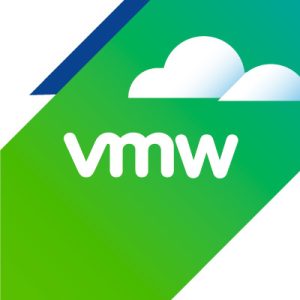
Tweet Get answers and solutions instantly by using VMware’s Knowledge Base (KB) articles to solve known issues. Whether you’re looking to improve your productivity, troubleshoot common issues, or simply learn something new, these most used and most viewed knowledge articles are a great place to start. Here are the top 5 most viewed KB articles … Continued


